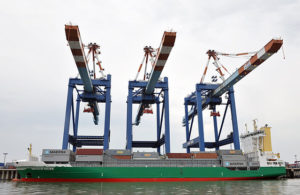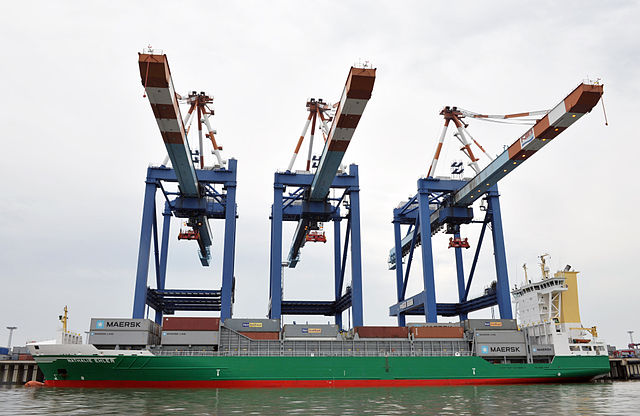 The shipping industry is benefiting from world economic growth and high trade multipliers through higher trade volumes, but the economy may have peaked and may grow at a slower pace this year compared to the last half of 2017, according to the Baltic and International Maritime Council (Bimco).
The shipping industry is benefiting from world economic growth and high trade multipliers through higher trade volumes, but the economy may have peaked and may grow at a slower pace this year compared to the last half of 2017, according to the Baltic and International Maritime Council (Bimco).
All shipping sectors stand to benefit from global economic growth that seems on track to reach its highest level since 2011. This as the International Monetary Fund (IMF) has maintained its projection for the world GDP at 3.9% and expects global economic growth to be supported by a strong momentum, favorable market sentiment, and accommodative financial conditions in 2018 and 2019.
Moreover, the continuous strengthening of the advanced economies is beneficial for the shipping industry, more notably container shipping, as growth in advanced economies has the highest impact on trade.
However, the Manufacturing Purchasing Managers Index (PMI)—which is not only an important indicator for the global economy but also for the shipping industry—has signaled a peak in the global business cycle in 2017. The recent PMI decline in 2018 across regions has already caused anxiety about the recovery’s strength and the current strength of shipping demand.
But Bimco in its report noted that “the current level of the PMI is still above the threshold level of 50, signalling an expansion in the underlying economics. It simply happens at a slightly slower rate compared to 2017.”
Looking at the PMI by market, the EU Manufacturing PMI reached an 11-year peak in December 2017 but has lost some tempo in 2018. The current level is, however, still robust by historic standards and is seen as a moderation of the growth pace, not a setback.
“The strong growth in 2017 has created short-term capacity constraints limiting the economy’s ability to grow at the same expansive rate for a long period and the slower 2018 growth speed can be considered ordinary,” said Peter Sand, chief shipping analyst at Bimco.
In the U.S., the focus is on how shipping will be affected by a full-blown trade war between U.S. and China.
“With shipping being a demand derived activity, an escalating trade war with many more commodities involved could trigger something bigger that would negatively impact global shipping in a much wider way including the transpacific container trade,” said Bimco.
“From a wider perspective, and if Chinese retaliations are imposed in response to the first US shot, they may weaken the current global upswing, with US soya bean exports as the other main dry bulk trade that could be affected—for better, if longer sailing distances comes around, or for worse, if cargoes are simply lost,” said Bimco.
For Asia, on the other hand, the IMF has maintained its expectation for the Chinese GDP for both 2018 and 2019. The expected growth is 6.6% in 2018 and 6.4% in 2019. The same picture is seen for Japan where projections for 2018 and 2019 are unchanged at 1.2% in 2018 and 0.9% in 2019.
The Chinese focus on credit tightening and a stronger push for limiting debt burdens is likely to reduce coming infrastructure investments in China. This will weigh on imports of iron ore and coal, as Chinese infrastructural investments are one of the main global dry bulk demand drivers.
The Japanese Manufacturing PMI reached its highest level in 26 years in January 2018 and the industrial production growth has stayed in positive territory. The higher inflation will spur higher consumer spending and benefit container shipping demand.
Bimco further observed that the trade multiplier for advanced economies has again returned to a level above 2, and the world trade multiplier has increased to 1.4, indicating that global trade increases by 1.4 when the global economy grows by 1%.
“However, this is as good as it gets, as the IMF expect advanced economies’ share of global GDP to continue its current decline and the world trade multiplier tracking back to 1.”
Said Sand: “If this development materializes the container shipping industry will see slower growth going forward, with demand growing only at the same pace as global GDP, which is a reversal for the industry.”
Photo: Hannes Grobe (talk)





